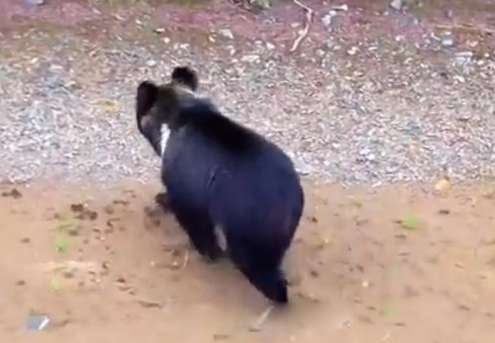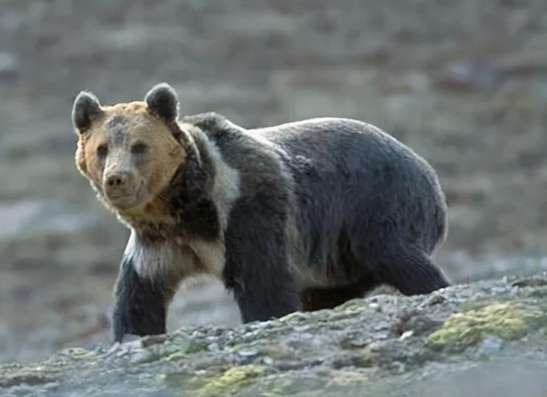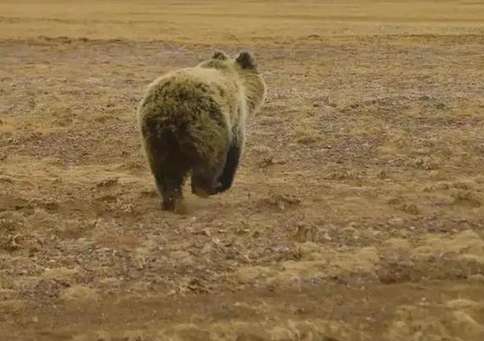Thanks to the achievements of ecological construction and animal protection, the number of wild animal populations in our country is slowly increasing. People living in cities may not be too sensitive to these changes, but some people living in mountainous areas can feel them intuitively.

In many rural areas, wild animals descending from the mountains is nothing new. Even some rare animals under special national protection are not uncommon in human living areas in recent years. As the ecological environment gets better and better and the number of wild animals further increases, similar sightings will become more and more frequent.
Compared with some ordinary animals, large animals, especially wild animals such as large predators, are at a higher risk of intruding into areas where humans live. For example, the Siberian tiger that once broke into Mishan City in Heilongjiang Province attacked people while escaping.
Most wild animals come down the mountain basically in search of food. Villages near the edge of the forest are more likely to become targets of wild beasts.
Recently, in Banma County, Goluo Tibetan Autonomous Prefecture, Qinghai Province, a wild bear broke into a herdsman’s home, and people were really frightened. Fortunately, the purpose of this bear is very clear, it is to find food and does not hurt anyone.
Wild bears broke into herdsmen’s houses and searched frantically for food
As the country’s ecological and environmental protection efforts have continued to increase in recent years, the ecological environment of Banma County has also continued to deteriorate. Things are getting better, and rare and exotic animals such as yellow-throated marten, white-lipped deer, and forest musk deer have been photographed in the local area one after another, and their populations are increasing.
In the local area, finding bears is not a new thing. The locals have long been accustomed to "bears appearing". Just this morning, some herdsmen reported that a wild bear had entered their home.
It is reported that the bear climbed in through an open window. After entering the house, it wreaked havoc, rummaged through boxes and cabinets, and after ransacking the refrigerator, it also targeted three barrels of clear oil.
Although it is not surprising to find wild bears in the local area, no matter who it is, they will be scared when a wild bear suddenly appears in their home. After the wild bears broke into the herdsmen's homes, they rummaged through things in search of food. I saw that it was so skillful that it opened the refrigerator and searched it, looking like a "veteran".

The noise the wild bear made in search of food soon attracted people's attention. For fear of angering it, the herdsmen did not dare to act rashly, so they chose to ask for help.
After the relevant staff arrived, in view of the situation at the time, people decided to drive him back to the mountain. After about half an hour of efforts by everyone to drive it away, the wild bear finally ran back to the mountain reluctantly.
It has a crescent moon on its chest and prefers to eat meat
The wild bear that broke into the herdsman’s house is scientifically called the Tibetan brown bear. It is one of the subspecies of brown bear. In the local area, People are used to calling it the Tibetan horse bear.
The Tibetan horse bear has a wider head, a pointed mouth, rounded ears, bulging shoulders, a particularly short tail, thick limbs and obvious muscles. Among the brown bear family, the Tibetan horse bear is considered to be above average in size, and the largest individual can even reach 400 kilograms.
Because the Tibetan horse bears live in a relatively cold environment, the hair on their bodies is also quite abundant. The color of Tibetan horse bears' hair varies widely, including tan, brown-black, brown-yellow, and dirty white. Most individuals are tan, but when they get older, they will turn silver-gray.
When the Tibetan horse bear reaches adulthood, white hair will also grow on its neck and chest, and the entire patch will be crescent-shaped. Tibetan horse bears have larger white crescent-shaped patches compared to black bears. So let’s not confuse the Kurama Bear with the Black Bear.
In our understanding, most bears are omnivores, and plant-based food accounts for the vast majority. However, the Tibetan horse bear is an exception, because its habitat is mostly in mountain forests, meadows or bushes at an altitude of 3,500-5,000 meters.

A common feature of this type of environment is that it is relatively desolate, and the types of plants It is not rich enough, so the Tibetan horse bear eats a larger proportion of meat than the average brown bear. To put it simply, "there is not enough grass, so we can only make up for it by eating meat." In addition to hunting, carrion also accounts for a large part of the acquisition of meat.
Extremely fast speed and ferocious personality
Bears give people the impression of being relatively bulky and not very flexible. On weekdays, they tend to have a leisurely gait and a slow pace. , but in fact they run very fast, and ordinary people can't run them at all.
Zangma Bear is the fastest among all bears.The fastest, they are the fastest bears in the world. It is reported that their speed can reach 50 kilometers per hour. In the early days, people on the plateau believed that it could run as fast as a horse, so it was called "horse bear". It is not difficult to understand that when hunting on a plateau with a broad view, there is no cover, and the only thing is to see who can run faster.
In the Qinghai-Tibet Plateau, Tibetan horse bears often visit human living areas and have contact with people. For example, wild Tibetan horse bears can often be seen strolling on the streets of Tibet. These bears do not show much aggression and rarely hurt people or prey on livestock. This has led many people to believe that the Tibetan horse bear is a relatively docile bear.
In fact, compared with very dangerous bears such as sloth bears, Tibetan horse bears are indeed more docile, but the premise is relative. The Tibetan horse bear has a ferocious personality and is still very dangerous to humans. In reality, they also have records of hurting people.
For example, in June 2021, a Tibetan mother and son were attacked by a Tibetan horse bear while digging for cordyceps, causing serious injuries.
The Tibetan horse bears live in a harsh environment with limited natural food, so they are more likely to be attracted to food in villages. Therefore, compared to other places, it is more common for wild bears to go down the mountain here.
Generally speaking, when wild animals enter a strange environment, they will be highly nervous and prone to stress reactions. So when we encounter wild animals coming down the mountain, we must not provoke them to avoid being attacked.